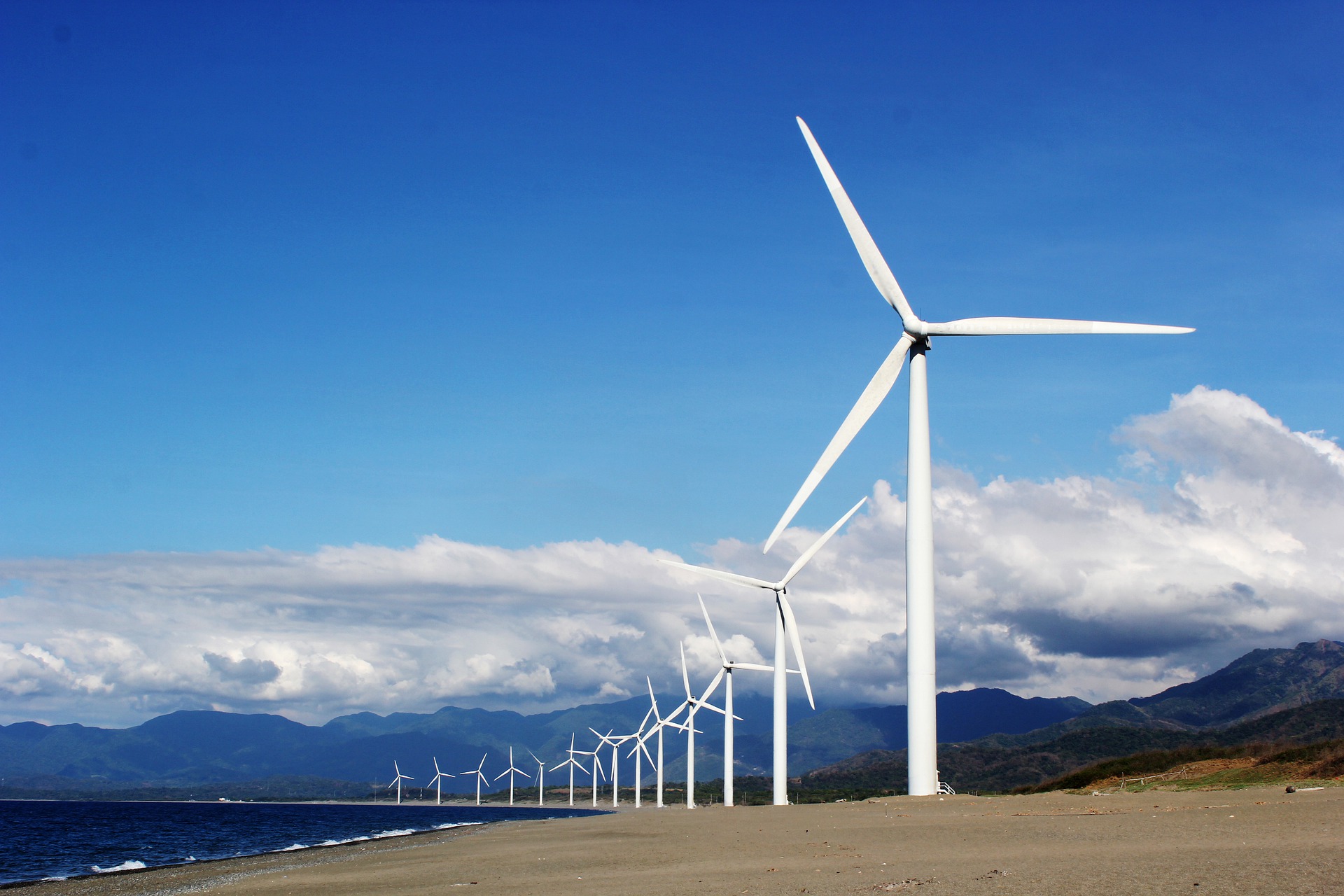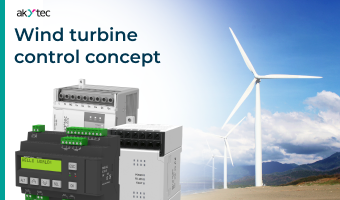Wind turbines are installations, that harvest wind energy, which is a renewable energy source. Turbines do not generate waste and do not need fuel, which distinguishes them from traditional energy generators. Wind generators can operate in a wide range of environmental conditions: up to 100% humidity and temperatures from -40 °C to +85 °C. The only requirement is wind. Wind turbines generate high voltages and currents. The electrical components must be able to withstand power surges and filter out electromagnetic interference from generators and mains switches. For wind generators to be operational and safe, the electrical parameters (current, voltage) must be continuously monitored, e.g. via a cloud service.

A wind generator is a device that converts the wind's kinetic energy into electrical energy using wind turbines. A typical wind turbine consists of a three-bladed rotor. The wind rotates the blades and, with the help of the rotor, drives a low-speed shaft which, through a stepped gearbox, transmits the rotation to a high-speed shaft that turns the generator. The amount of energy produced by a wind turbine depends directly on the wind speed.
The task and the solution concept
The task is to control the mechanical movements of the wind turbine, the hydraulic brake system, monitoring the meteorological parameters, and the machine working conditions. The control unit at the same time synchronizes the output frequency and connects the generator smoothly through power thyristor assemblies to the power grid. This process is carried out by a controller built into the control unit. Its program is stored in an inaccessible firmware in a permanent memory device (ROM).

Device selection for a control system using akYtec device
- Programmable relay PR200.24.4.2 - 2 pcs. from akYtec
- Analog input module MV110-8A from akYtec
- Digital input module MV110-16DN from akYtec
- 3-Phase Power Measurement Module ME110-230.3M from akYtec
- Power Control Unit
- Network Gateway for accessing to the Cloud Service RS485 <=> GPRS
- Cloud service e.g: Microsoft Azure / Amazon Web Services (AWS)
The first programmable relay PR200 (master) controls the start-up of the generators, ensures the data exchange between digital and analog sensors with the Cloud Service and the MV110 modules. The second programmable relay PR200 (slave, connected via RS485 interface) controls power electric automation and the generator access to the power grid. ME110-230.3M 3-Phase Power Measurement Module monitors the mains and the generator parameters (current, frequency, and power factor).
Mini-PLC PR200 controls the switching of the power thyristor assemblies and ensures that the generator is connected smoothly at synchronous frequency. Provided cellular coverage of the installation site, it is possible to remotely control start-up and monitor the operating parameters of the wind turbine in a Cloud-based Service using a PC, or via an app. This allows the data parameters to be monitored processed and visualized. It is also possible to assign access rights for the turbine management, according to the management company's internal security system.
The system can monitor the following wind generator parameters and display them on the PR200 screen:
- Voltage, currents, power factors, and frequency on generator output
- Rotation speed of the turbine propeller and generator shaft
- Nacelle downwind orientation and wind speed
- Temperature of the units, turbine bearing, and oil in the gearbox
- Electrical energy production, instantaneous power
- Status of discrete sensors in the wind turbine control system
- Status of electrical automation control signals



Due to its highly developed technology and economic and environmental advantages, wind energy is one of the fastest-growing and most promising renewable energy sources. The Global Wind Energy Council (GWEC) estimates that wind power will meet 34% of global electricity demand by 2050. Offshore and onshore wind farms will become increasingly important in global efforts to reduce the effects of climate change.

